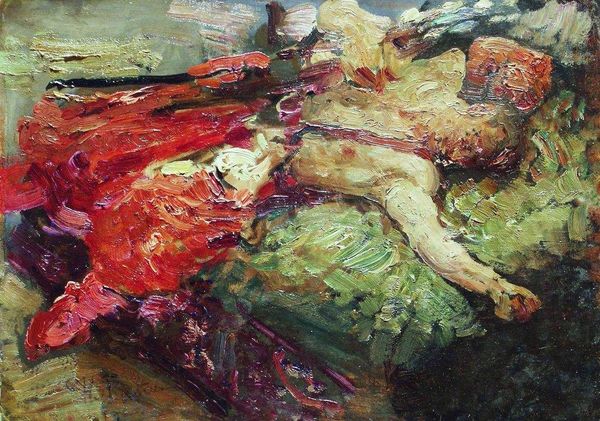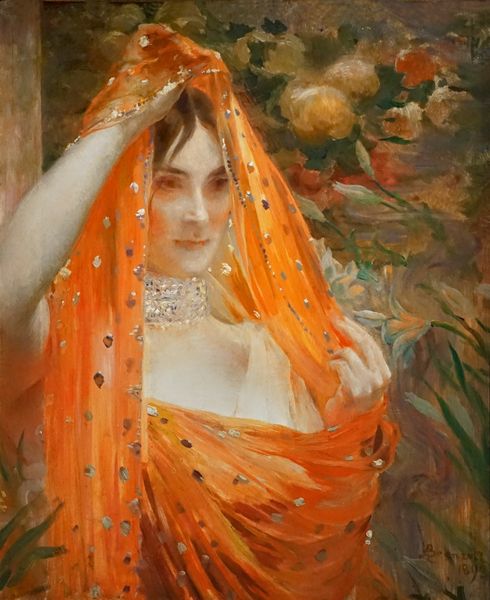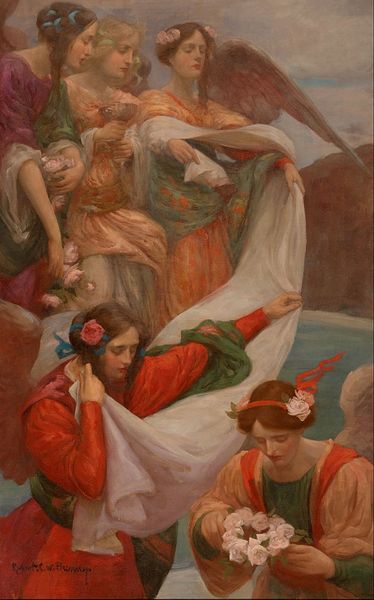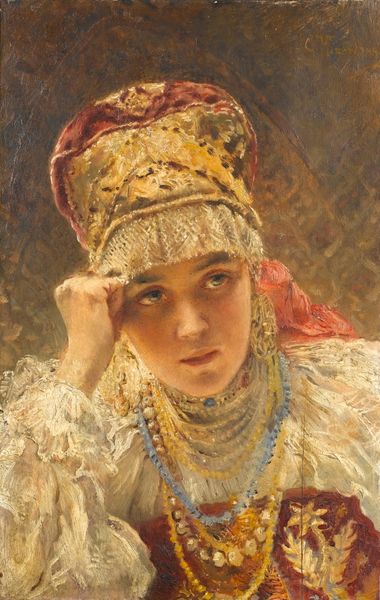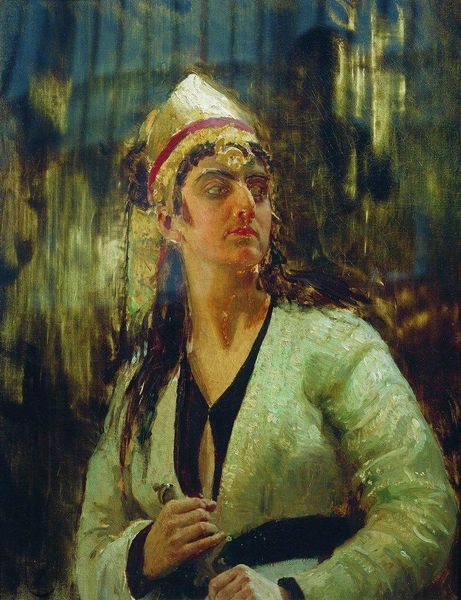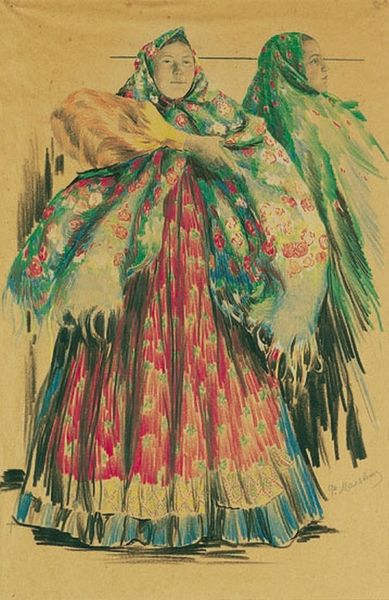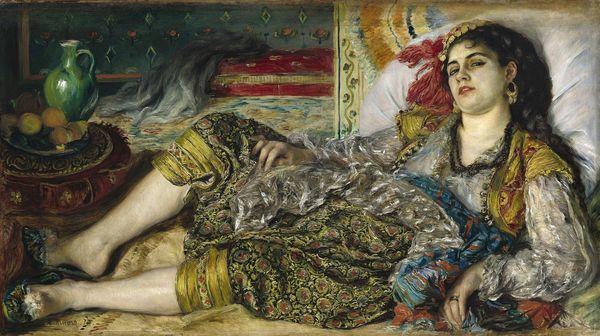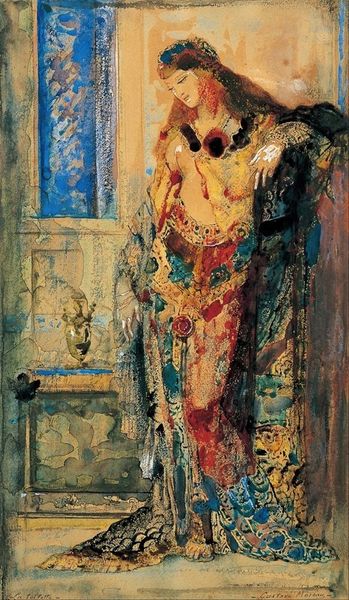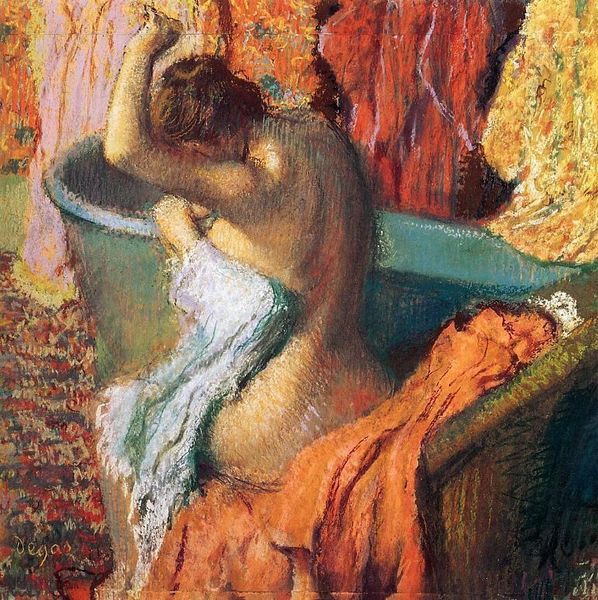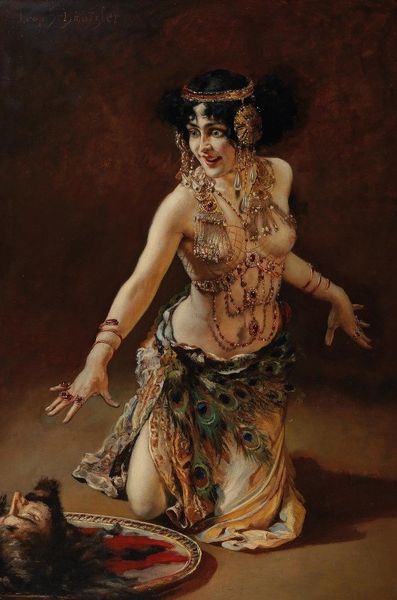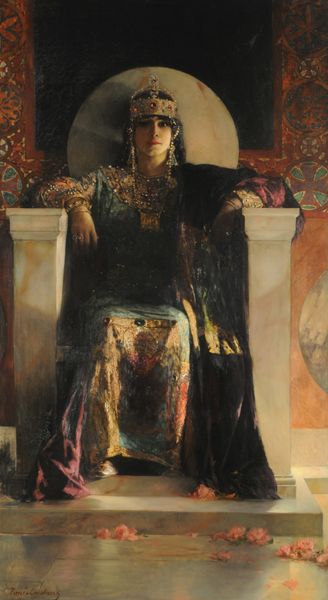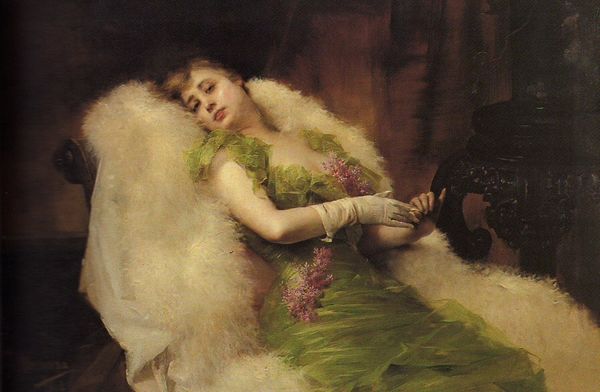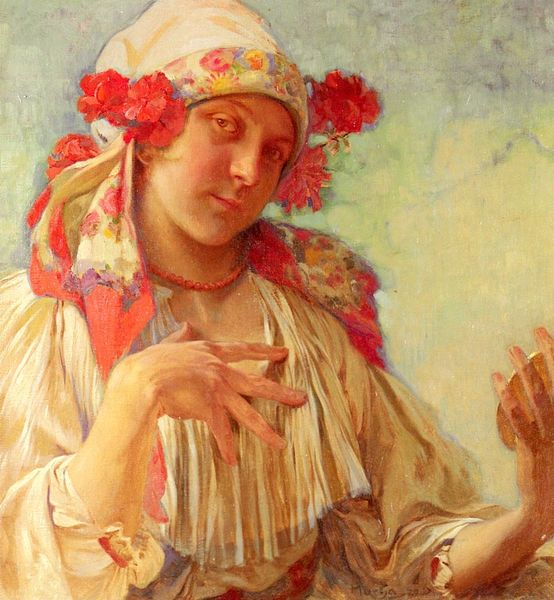
Copyright: Public domain
Curator: This vibrant oil painting by Ilya Repin, titled "Dancing Woman," was created around 1920. It’s part of a private collection and really captures a fleeting moment. What strikes you about it initially? Editor: The sheer energy. There's this incredible sense of motion, a swirl of color that suggests the exuberance of dance. I immediately think of freedom and perhaps cultural pride embodied in her clothing and expression. Curator: I agree about the dynamism. If we consider just the formal elements, Repin masterfully uses impasto and loose brushstrokes to create the illusion of movement. Look how the colors blur and blend, particularly in her headscarf. This really echoes Futurist techniques but grounded in the portrait genre. The restricted palette focuses on a triad of earthy greens, reds and creams to great effect. Editor: The colors also play a symbolic role, don’t you think? Red, in particular, can signify passion and celebration in many cultures. The golden embellishments and patterns in her headdress feel heavy with cultural significance and speaks to the importance of performance. Curator: That's a fascinating interpretation. From a purely formal perspective, notice how Repin positions the woman slightly off-center. This asymmetry creates a visual tension, as does the strong diagonal implied by the figure's pose. It prevents the composition from feeling static. Editor: And her gaze! She’s looking directly at the viewer, engaging us, as though we’ve been invited to witness her performance. It lends a sense of intimacy to the scene, despite the impressionistic execution. I wonder what dance it is, is it celebrating or mourning? It speaks volumes, even to someone who perhaps does not recognize the origins. Curator: The artist is doing that, using abstraction as suggestion and never settling on only one truth or perspective. I think your observations highlight how visual language carries a significant cultural payload, shaping our perception and experience. Editor: Precisely. It reveals the beauty and depth hidden in seemingly straightforward genre paintings when examined through the lens of cultural memory. Curator: I agree completely. I believe the beauty of art resides in its ability to convey motion using just colours and movement; however it then provides a point to discover and rediscover more profound cultural meanings.
Comments
No comments
Be the first to comment and join the conversation on the ultimate creative platform.
